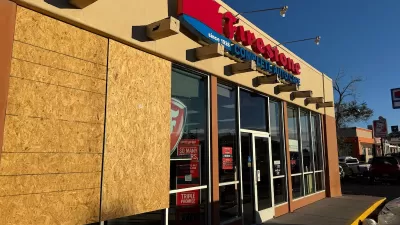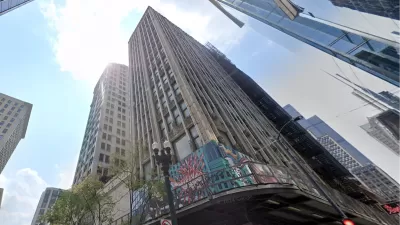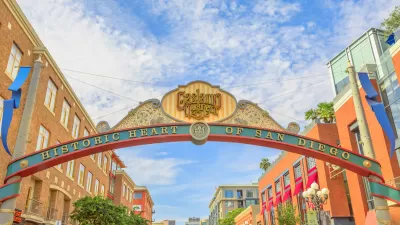Adaptive reuse can help the old become the new, honoring our history and desire for efficiency along the way. This piece highlights 10 examples of adaptive reuse projects from around the west, depicting them in their before and after states.
Refurbishment, rehabilitation, retrofitting, adaptive reuse: Call it what you will, but the transformation of an existing building from one state to another can be an effective way to build community. At its most basic level, adaptive reuse takes an existing structure and modifies it to be used as something else. An auto repair shop renovated to serve as a diner. An empty warehouse turned into office spaces.
Throughout the country we have hundreds—thousands—of examples of existing structures that are under-used, or not used at all, that with the right investor and market conditions could be re-purposed into something new, alleviating the need for new construction.
Adaptive reuse is a sign that our towns are healthy, and worthy of new investment. Plus, there’s something a bit sad about leaving old buildings behind, then going somewhere new and putting all our time and energy into creating shiny new buildings far from our town center. In 10 or 20 years, those buildings begin to age and we repeat the process all over again. The buildings in these examples are a reversal of that process. They represent the idea that, with a bit of creativity and elbow grease, even the most downtrodden of our old town buildings can find new life. In a world where things fall apart, it’s nice to know we can put them back together again.
FULL STORY: Adapt and Reuse: Transforming the Old to the New

Alabama: Trump Terminates Settlements for Black Communities Harmed By Raw Sewage
Trump deemed the landmark civil rights agreement “illegal DEI and environmental justice policy.”

Planetizen Federal Action Tracker
A weekly monitor of how Trump’s orders and actions are impacting planners and planning in America.

The 120 Year Old Tiny Home Villages That Sheltered San Francisco’s Earthquake Refugees
More than a century ago, San Francisco mobilized to house thousands of residents displaced by the 1906 earthquake. Could their strategy offer a model for the present?

In Both Crashes and Crime, Public Transportation is Far Safer than Driving
Contrary to popular assumptions, public transportation has far lower crash and crime rates than automobile travel. For safer communities, improve and encourage transit travel.

Report: Zoning Reforms Should Complement Nashville’s Ambitious Transit Plan
Without reform, restrictive zoning codes will limit the impact of the city’s planned transit expansion and could exclude some of the residents who depend on transit the most.

Judge Orders Release of Frozen IRA, IIJA Funding
The decision is a victory for environmental groups who charged that freezing funds for critical infrastructure and disaster response programs caused “real and irreparable harm” to communities.
Urban Design for Planners 1: Software Tools
This six-course series explores essential urban design concepts using open source software and equips planners with the tools they need to participate fully in the urban design process.
Planning for Universal Design
Learn the tools for implementing Universal Design in planning regulations.
Clanton & Associates, Inc.
Jessamine County Fiscal Court
Institute for Housing and Urban Development Studies (IHS)
City of Grandview
Harvard GSD Executive Education
Toledo-Lucas County Plan Commissions
Salt Lake City
NYU Wagner Graduate School of Public Service





























